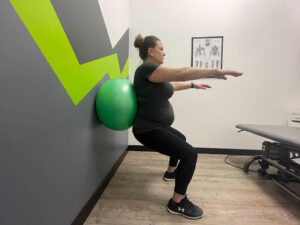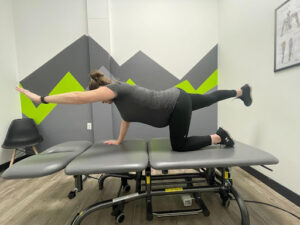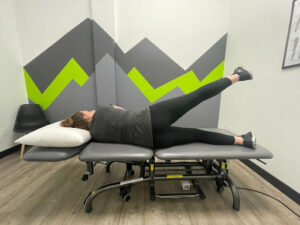Written by Helen Lo, Physiotherapist
 For anyone out there wondering if it is safe to exercise during pregnancy, let me be the first to tell you YES, and it’s encouraged!
For anyone out there wondering if it is safe to exercise during pregnancy, let me be the first to tell you YES, and it’s encouraged!
Traditionally, medical advice during pregnancy included reducing exertion and avoiding strength training out of fear of causing potential harm to the baby and injury to Mom.
New research1,2 has proved the complete opposite; showing that there are actually a wide range of benefits to exercising during pregnancy including:
1. Improved aerobic and muscular fitness
2. Promotion of appropriate maternal weight gain
3. Facilitating labour
4. Preventing gestational glucose intolerance
5. Preventing pregnancy-induced hypertension
In fact, not exercising during pregnancy has been associated with risk of:
1. Loss of muscular and cardiovascular fitness
2. Excessive maternal weight gain
3. Increased risk of gestational diabetes
4. Increased risk of pregnancy-induced hypertension
5. Pelvic floor dysfunction
6. Varicose veins
7. Deep vein thrombosis
8. Higher incidences of low back pain
9. Poor psychological adjustment to the physical changes of pregnancy
Guidelines for Physical Activity During Pregnancy
1. All women that are deemed medically safe to exercise should be physically active throughout pregnancy.
2. Physical activity should be accumulated over a minimum of 3 days per week, however it’s encouraged to be active everyday.
3. Incorporate a variety of aerobic exercise, resistance training, and yoga or gentle stretching for maximum benefit.
4. Pelvic floor muscle training on a daily basis to reduce the risk of urinary incontinence.
The Goal of Exercise During Pregnancy
Keep in mind, the goal with exercise during pregnancy is to maintain your current level of physical health. Avoid trying to reach peak fitness or train for an athletic competition. If you have never exercised before, a great place to start is 30 minutes of walking daily.
Below you will find some recommended exercises for pregnancy. The parameters are generalized, and should only be used as a guide. If you are uncertain about how these exercises may work for you, please call to chat with our Peak Health physiotherapist and we can get you on the right track!
Please speak with your doctor to obtain medical clearance before participating in any physical activity.
Try These 3 Exercises to Get Moving
 Squat with a Ball
Squat with a Ball
Starting position: Place the physio ball against the wall and stand with your back supported by the ball.
Execution: Squat down moving with the ball, return to standing position.
Parameters: Sets: 1-2 sets, Reps: 10-12
 Birddog
Birddog
Starting position: Start in a crawling position on your hands and knees, ensure hips and shoulders are at 90°.
Execution: At the same time, lift one arm straight out front and lift the opposite leg straight back, return to the starting position and repeat with the opposite arm and leg.
Parameters: Sets: 1-2 sets, Reps: 6-8 per side
 Leg lifts
Leg lifts
Starting position: Sidelying.
Execution: Lift the top leg up towards the ceiling, hold for 2-3 seconds, lower leg back down.
Parameters: Sets: 1-2 sets, Reps: 8-10 per side
Next Steps
Exercise during pregnancy is safe, recommended, and with the help of a pelvic floor physiotherapist, can ensure maintenance of your current fitness level and overall health.
Book your discovery call today to see how pelvic health physiotherapy can support you throughout your pregnancy!
References
- Barakat, R., Refoyo, I., Coteron, J., & Franco, E. (2019). Exercise during pregnancy has a preventative effect on excessive maternal weight gain and gestational diabetes. A randomized controlled trial. Brazilian journal of physical therapy, 23(2), 148-155.
- Vargas-Terrones, M., Nagpal, T. S., & Barakat, R. (2019). Impact of exercise during pregnancy on gestational weight gain and birth weight: an overview. Brazilian journal of physical therapy, 23(2), 164-169.
- Clinton, S. C., Newell, A., Downey, P. A., & Ferreira, K. (2017). Pelvic girdle pain in the antepartum population: physical therapy clinical practice guidelines linked to the international classification of functioning, disability, and health from the Section on Women’s Health and the Orthopaedic Section of the American Physical Therapy Association. Journal of Women’s Health Physical Therapy, 41(2), 102-125.
 Squat with a Ball
Squat with a Ball  Birddog
Birddog Leg lifts
Leg lifts